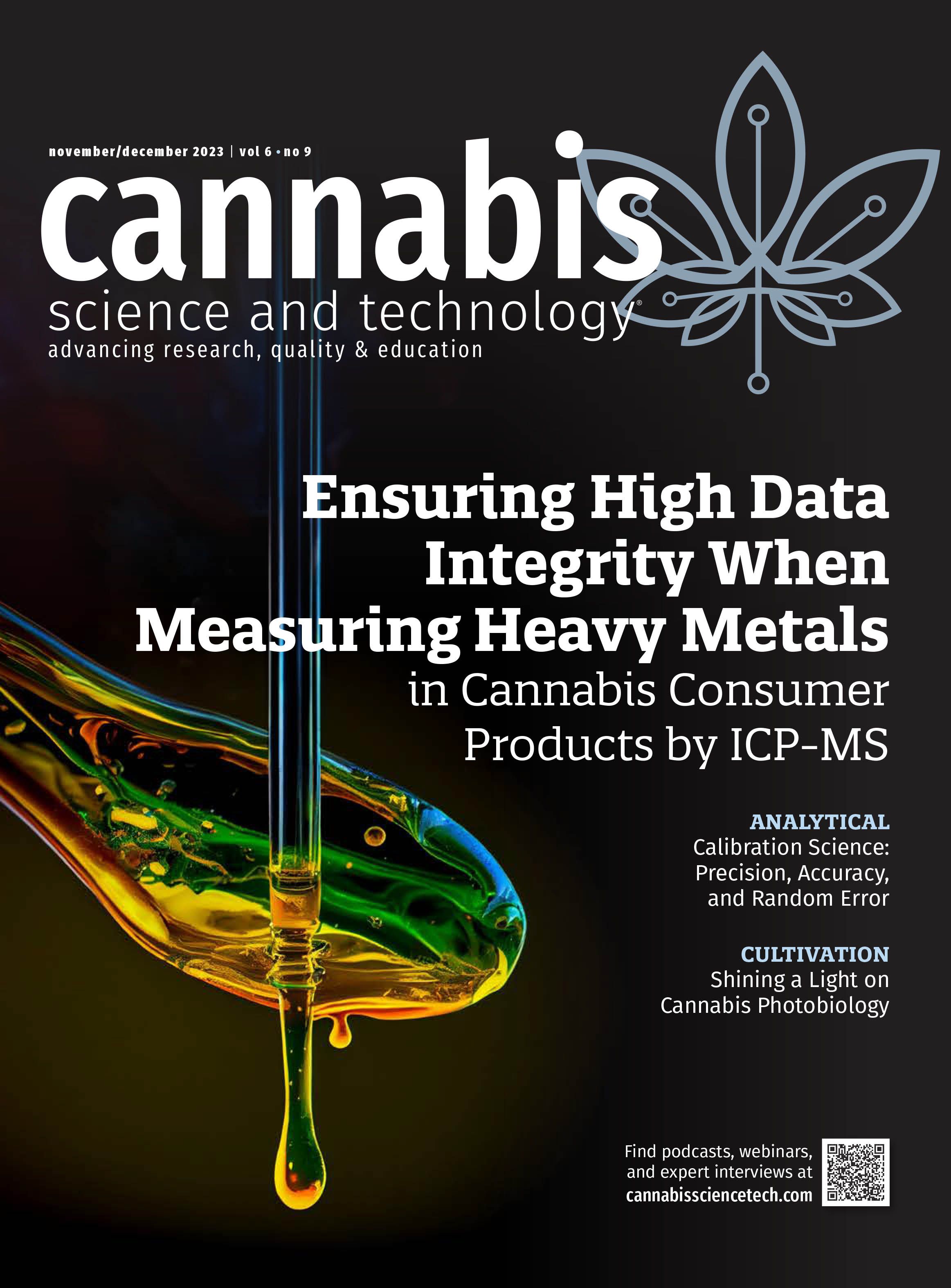Shining a Light on Cannabis Photobiology
In this article, we dive deeper into the physical, cellular, and molecular adaptions that plants demonstrate in response to light intensity and spectrum.
The physical, cellular, and molecular adaptions that plants demonstrate in response to light intensity and spectrum are extremely salient to anyone in cannabis cultivation, specifically those looking to maximize harvest yield and phytochemical content.
What are tropisms and why should we care? Tropisms are biological phenomena observed in plants and other organisms. These pertain to the growth or movement of an organism in response to external stimuli, such as light, gravity, touch, or chemicals. Tropisms are essential for plants to adapt and thrive in their environment.
Phototropism is the reorientation of plant organs (stalks, branches, stems, and leaves) to compensate for the intensity and direction of light. Among the significant factors that govern plant growth and physiological processes, photons play a crucial role as the primary source of energy for synthesizing carbohydrates (glucose) through photosynthesis. The continuous movement of the light source, usually the sun, results in diurnal changes in both intensity and direction, which have a profound impact on photon availability and, therefore, plant health. To maximize light absorption for efficient photosynthesis and overall physiological development, plants have undergone evolutionary adaptations that bring forth a photomorphogenic tendency known as phototropism (1).
While the term phototropism encompasses a general growth response to a light source, heliotropism is a specific form of phototropism that involves the movement or reorientation of plant organs towards a light source. The word “heliotropism” is derived from the Greek words “helios” meaning sun, and “tropos” meaning turn or direction. This response allows an increased exposure to photons and photonic energy for the purposes of photosynthesis and photomorphogenic functions. Skototropism, or negative phototropism, refers to the growth or movement of plant organs away from a light source. This plant response protects light-sensitive tissues, such as roots or certain reproductive structures, from excessive light exposure. The word “skototropism” comes from the Greek word “skotos” meaning “darkness.” Hence, skototropism means “turning towards darkness.” When we relate this to the cultivation of cannabis (Cannabis sativa L.), the role of photoreceptors becomes particularly interesting. Cannabis cultivation involves careful control of the light environment to set the potential for optimal yield and phytochemical content. Growers may manipulate light intensity, duration (photoperiod), and spectrum to influence various stages of the plant’s life cycle, from vegetative growth to flowering.
Phototropins, a subclass of flavoprotein photoreceptors, are integral to the phototropic behavior observed in an array of organisms such as algae, fungi, and higher plant species. These photoreceptors are integral to plant photobiology, serving as a mechanism by which plants detect the direction, intensity, and various spectra (wavelengths) of light, which is vital for environmental adaptation and, ultimately, survival. Phototropins exhibit heightened sensitivity to blue light (2). The phototropic responses mediated by these receptors are remarkably rapid, often taking only minutes to cause plant movement in response to lighting stimuli. When these receptors sense blue light, they trigger a cascade of intercellular signals that result in the redistribution of specific phytohormones known as auxins. Auxins are pivotal in governing the growth and development of plants. Phototropins, through complex signaling, activate specific proteins that influence auxin transport and redistribution within plant tissues (3).
In heliotropism, auxin is redirected to the shaded part of the plant where its accumulation leads to differential cell elongation, causing the redirection of the plant’s apex or “growing tip” towards the light source. Such movement ensures that the plant presents the largest possible surface area towards the lighting source, increasing photosynthetic and photomorphogenic function. While auxins play a predominant role in phototropism, they are not the only plant hormones involved. Other vital plant hormones, such as cytokinins and gibberellins also contribute to the complex interplay of growth regulation in plants.
Cytokinins are a class of phytohormones critically implicated in numerous aspects of plant ontogeny, especially in the regulation of cellular proliferation and expansion within the foliage. As leaves mature and enter the senescence phase—the latter part of their life cycle—cytokinins contribute to maintaining leaf vitality. They do so by modulating the build-up of sugars, thereby preventing the adverse effects of their over-accumulation, which can lead to cellular damage. At the same time, they upregulate the biosynthesis of chlorophyll, one of the pigments responsible for detecting and processing specific photons. This regulation is paramount in sustaining an extended photosynthetic period—which is vital for the generation of energy in the plant. Cytokinins promote trichome development, which is especially valuable in cannabis cultivation.
Gibberellins can combat abiotic and physiological stresses. Plants rely on these compounds to control many developmental processes, including seed dormancy, root growth and trichome or hair abundance, germination, quiescence, fruit ripening, and flowering (4). In a conducive environment, gibberellin is released within the seed, stimulating enzyme production to break down the endosperm, fostering the emergence of the radicle tip which, in time, evolves into the primary root known as a cotyledon. Subsequent to this, gibberellins set the stage for other plant hormones, such as auxins and cytokinins, which synergistically drive cell expansion and differentiation during the post-germinative growth phases. Gibberellins assume a critical role in the maturation of fruits, as they operate in tandem with auxins to spur cell division and elongation required for fruit development. By understanding and manipulating these plant hormones, cannabis cultivators can fine-tune the growth, vigor, and cannabinoid profile of their crops. Furthermore, cultivators should not overlook pertinent environmental factors that affect plant hormone levels, such as light, temperature, humidity, water, and nutrient availability—since these factors can have a significant impact on the cultivation of a bountiful and high-quality harvest.
Further Down the Rabbit Hole of Photobiology
In addition to the aforementioned physical adaptions to light and spectra, there are a whole host of very interesting phenomena occurring at the cellular and molecular levels that we should be considerate of, as we will discuss below.
Perception of Blue Light
In cannabis cultivation, the perception of blue light through phototropins is of considerable significance. As mentioned earlier, phototropins are a class of photoreceptor proteins activated by blue light. Blue light has a profound effect on chlorophyll formation and inhibits cell expansion resulting in reducing the size of individual cells (5). This diminishment in cellular dimensions correlates with decreased internodal spacing (the gap between nodes) ending up with shorter and denser plants. Such a morphology is particularly desirable for indoor cultivation systems. Blue light is a crucial component of horticulture; however, achieving an optimal spectral balance is key, as both excess and insufficiency can be detrimental to plant development.
Autophosphorylation and Kinase Activity
Upon the absorption of blue light, activated phototropins undergo a fascinating transformation called autophosphorylation. This is a biochemical process wherein phototropins catalyze the transfer of phosphate groups from adenosine triphosphate (ATP) molecules to certain serine or threonine amino acid residues within their own polypeptide structure. This phosphorylation event is not a mere alteration but a pivotal molecular mechanism that propels the activation of kinase domains within the phototropin proteins, which is a crucial step to downstream signaling (6).
Activation of Downstream Signaling
This activation is akin to flipping a “molecular switch” whichs triggers a cascade of intracellular signaling pathways. These pathways, laden with a variety of secondary messengers, involve the modulation of various proteins and molecules within the cell. The consequences of these alterations are far-reaching, potentially encompassing the upregulation or suppression of gene transcription and metabolic pathways. The intricacies of this signal transduction mechanism allow the plant to respond and adapt to varying light conditions, thus influencing its growth and developmental patterns in response to environmental stimuli.
Acidification of Cell Walls
Several factors influence cell growth and expansion, including plant hormones. Auxin is essential to the growth and development of plants because it promotes cell elongation and proliferation. Activating this hormone promotes the production of proton pumps, which in turn results in the acidification of the apoplast, the area outside of the plasma membrane. Auxin also enhances the activity of enzymes that add phosphate groups to proteins, targeting the second-to-last threonine residue in plasma membrane H+-ATPases, which are also responsible for acidification (7). In an acidic environment, combination of wall-loosening proteins and local acidification loosens the cell wall. Consequently, the cell wall becomes more flexible and can expand more readily.
Differential Growth and Bending
As a result of the acidification-induced cell wall loosening, cells on the shaded side of the organ elongate more rapidly than those on the illuminated side. This differential growth causes the plant organ to bend towards the light source. Due to the softening of the cell walls from acidification, cells on the shaded side of the organ tend to stretch out more quickly than the ones exposed to light. This uneven growth prompts the plant to curve toward the light (8). The acid-triggered alterations in the cell wall allow the internal pressure of the cell—known as turgor pressure, which is the force exerted by the cell’s contents against its wall—to promote cell growth more efficiently. Hence, cells on the darker side of the plant structure, which have higher levels of the growth hormone auxin, exhibit an amplified rate of expansion driven by this turgor pressure compared to the cells on the light-facing side. Through this mechanism, plants adeptly adjust their growth to ensure they capture as much sunlight as possible, which is vital, especially in areas where light availability is uneven or limited.
The Big Picture
In general, lighting plays a critical role in setting the potential for phytochemical development and plant crop yield. Photons are the fuel by which photosynthesis and photomorphogenic functions are powered. However, these processes are far from a simple delivery of photonic energy to the plant. In order to effectively utilize this energy, the plant is required to rapidly adapt to fully harness the benefits derived from the available light. In a complex chain of events, a plant does just this by reorienting its tissue to provide its photoreceptors the most exposure to the lighting source. This takes place within the process of phototropism, whereby plant surfaces will turn towards or away from the light source, depending upon its needs.
Of course, cultivators engaged in controlled environment agriculture (CEA) must do their part, as well. Growers will commonly space plants to minimize competition for resources, including canopy lighting exposure and root space. Defoliation is a practice that allows better exposure for multiple plants to valuable lighting, although the process has other benefits. Modern horticultural teams have access to highly-adjustable light sources, in terms of intensity, distribution, and spectrum. Adjusting all three of these variables affects every stage of plant growth, from seed or clone to harvest. It has been proven that manipulation of spectra can significantly alter phytochemical content (cannabinoids, terpenes, and flavonoids), and also produce molecules unique or normally foreign to individual cultivars (9). Even numerous experts in photobiology acknowledge the substantial lacunae in our understanding of plant-light interactions. However, given what we know today with how plants respond to lighting intensity and spectrum, there are considerable opportunities to maximize cultivation yield and phytochemical content through optimizing the configuration of light throughout the cultivation environment.
References
- Pedmale, U. V., Celaya, R. B., and Liscum, E., Phototropism: Mechanism andoutcomes. The arabidopsis book. 2010. https://www.ncbi.nlm.nih.gov/pmc/articles/PMC3244944/
- Christie J. M.,Phototropin Blue-Light Receptors. Annu. Rev. Plant Biol., 2007, 58, pgs. 21–45. https://doi.org/10.1146/annurev.arplant.58.032806.103951
- Sakai, T., Kagawa, T., Kasahara, M., Swartz, T. E., Christie, J. M., Briggs, W. R., Wada, M., and Okada, K.,ArabidopsisNPH1 and NPL1: Blue Light Receptors That Mediate Both Phototropism and Chloroplast Relocation. PNAS, 2001, 98(12), pgs. 6969–6974. https://doi.org/10.1073/pnas.101137598
- Savitha, T., and Sankaranarayanan, A., Ameliorative Characteristics of Plant Growth Enhancing Microbes to Revamp Plant Growth in an Intricate Environment. Plant-Microbe Interaction - Recent Advances in Molecular and Biochemical Approaches,2023, pgs. 117–135. https://doi.org/10.1016/b978-0-323-91876-3.00006-3
- Lightworks, California. End of Flower Cycle does it help to only use blue light. California LightWorks, 2021, https://californialightworks.com/blog/does-it-help-to-use-only-blue-light-at-the-end-of-flower-cycle/.
- Inoue, S., Kinoshita, T., Matsumoto, M., Nakayama, K. I., Doi, M., and Shimazaki, K.,Blue Light-Induced Autophosphorylation of Phototropin is A Primary Step for Signaling. PNAS, 2008, 105(14), pgs. 5626–5631. https://doi.org/10.1073/pnas.0709189105
- Majda, M. and Robert, S.,The Role of Auxin in Cell Wall Expansion. Int. J. Mol. Sci., 2018, 19(4), pg. 951. https://doi.org/10.3390/ijms19040951
- Bogoslavsky, L. and Neumann, P. M., Rapid Regulation by Acid pH of Cell Wall Adjustment and Leaf Growth in Maize Plants Responding to Reversal of Water Stress. Plant Physiol., 1998, 118(2), pgs. 701–709. https://doi.org/10.1104/pp.118.2.701
- Hildenbrand, Z.L., Grosella, A., Manes, R.J., Jacques, A., Spurlock, M., West, C., Love, O., Westerfield, R.E., Pecore, M., Liden, T., Gao, Sh., and Schug, K.A., Variable Red Light Exposure Affects Content in Group III Cannabis Cultivars. Cannabis Science and Technology, 2022, 5(6), pgs. 30-42.

About the Columnist
Dr. Zacariah Hildenbrand is a research Professor at the University of Texas at El Paso, the principal founder of Inform Environmental, a partner of Medusa Analytical, and is a director of the Curtis Mathes Corporation (OTC:CMCZ). Direct correspondence to: zlhildenbrand@utep.edu.

About the Guest Co-Authors
Hannia Mendoza-Dickey is an MS Chemistry student at The University of Texas at El Paso.
Robert Manes is the CEO and CTO of the publicly-traded Curtis Mathes Corporation, where he specializes in the creation and manufacture of frequency-specific lighting for horticulture and phototherapy purposes.
How to Cite This Article:
Hildenbrand, Z., Mendoza-Dickey, H., Manes, R., Shining a Light on Cannabis Photobiology, Cannabis Science and Technology, 2023, 6(9), 20-23.

Cannabis Pricing Crisis: Market Forces Shaping 2025 Trends
June 30th 2025The volatility of wholesale cannabis prices marked by large fluctuations and regional disparities highlight the inherent instability still present in the cannabis marketplace. Adapting to shrinking margins and increased competitions is putting pressure on operators, causing them to adopt cost-cutting technologies, expand into edibles and extracts, and secure long-term supply agreements. Understanding these evolving dynamics is essential for companies to adapt, compete, and thrive in the industry.